How to Create a Good Reading Environment
"Are you sure your leaders really know how to create an inclusive environs?"
I find myself asking clients this question likewise many times to count. Usually, this conversation occurs after they've told me that they're struggling to attain their diverseness goals. And it'southward actually hard to pinpoint where they're going wrong.
Part of the problem is that companies want to make change really fast. Don't go me wrong—goals are a practiced thing. And diversity efforts are long overdue.
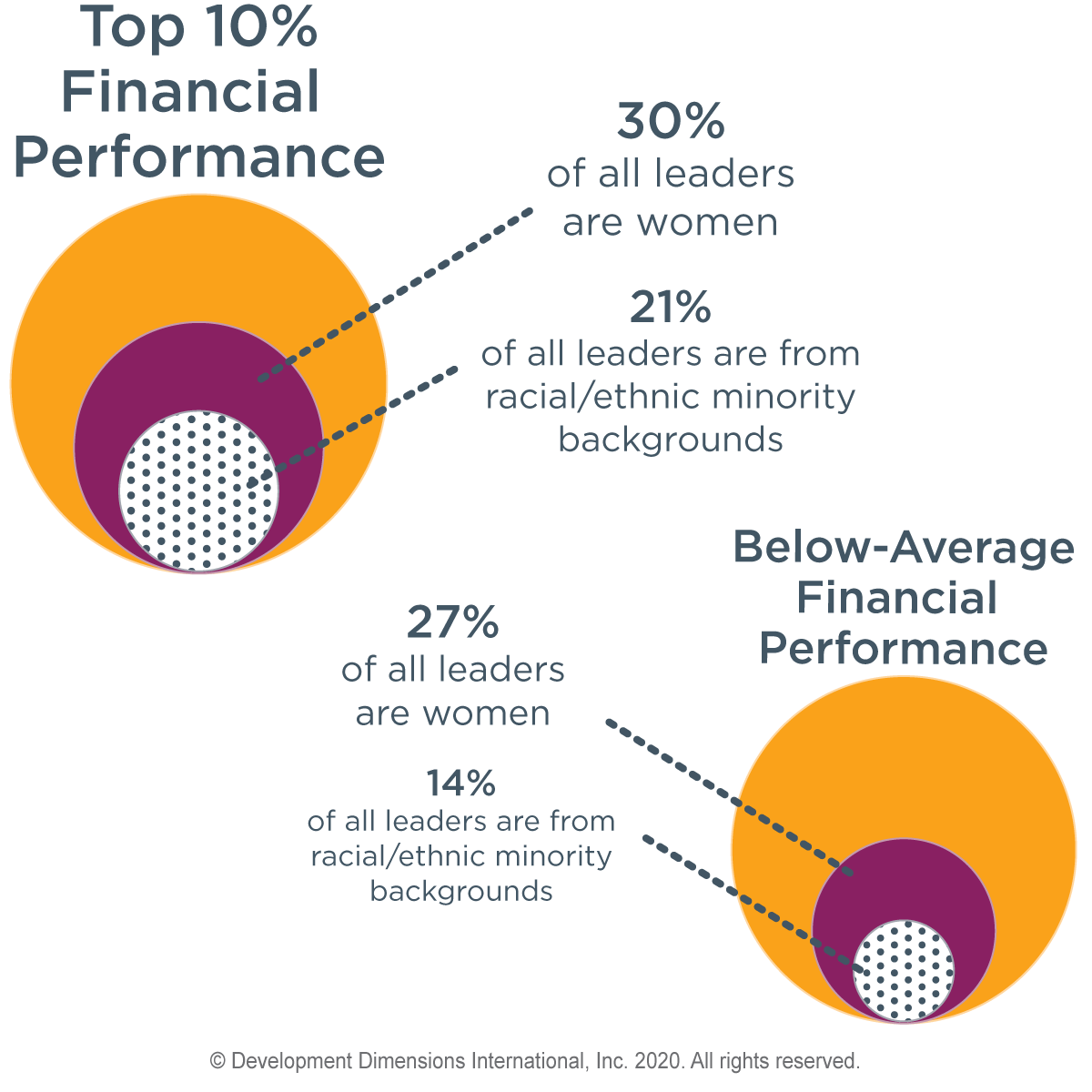
Simply visitor leaders need to recognize that a cultural transformation has to have identify for diverseness to thrive in your organization. Otherwise, your company becomes a revolving door. You can rent diverse talent all you want. But if your leaders don't know how to create an inclusive surround, people will head straight for the door.
That miracle plays out clearly in the data. In our Diversity & Inclusion Report 2020 , we establish that women and minorities were earning more promotions than e'er. At the same time, they were also much more than likely to say they would need to switch companies to advance. And they aren't waiting around to do it. They were nearly twice equally likely equally their not-minority peers to say they intended to leave in the next twelvemonth, especially at college levels.
In our D&I report, best companies to work for rate 75% higher for inclusion. We establish that a diverse, fair, and inclusive civilization played a dramatic difference. When leaders acquire those skills, it makes a huge divergence, especially when it comes to attracting and retaining talent.
There'south no easy gear up that will solve the trouble immediately. Only what'south important is that companies brainstorm that forward motion that will sustain success. 1 of the keys to doing that is teaching your leaders how to create an inclusive surroundings.
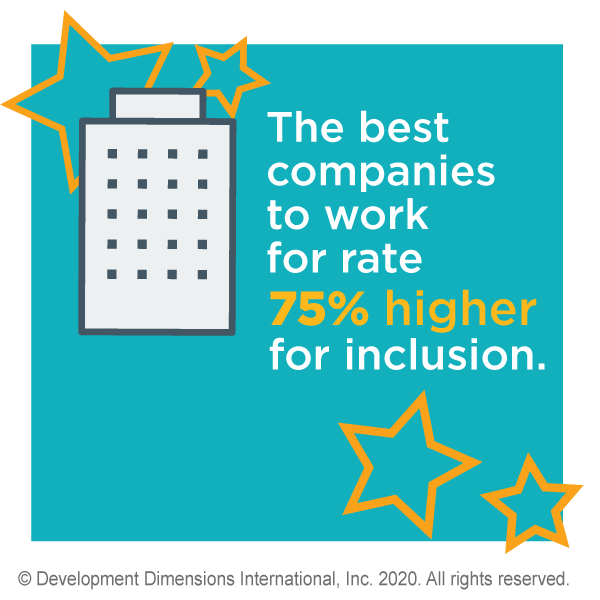
Great Leadership Is Inclusive Leadership
1 of the biggest mistakes companies brand is divorcing inclusion preparation from the rest of their leadership development goals. As a result, inclusion seems like something actress, an add-on that's not actually a part of leaders' daily work.
But that's the opposite of reality. Leaders don't do inclusion split from everything else they do. Rather, inclusion has to be woven into how they operate. It has to exist part of the fashion they communicate, interact, run meetings, requite assignments, etc., every single mean solar day.
Our enquiry showed that companies rated as "Best Places to Piece of work" scored 75% college for having an inclusive culture. Why? Because leaders who know how to create an inclusive environment on a daily basis create a better work environment for everyone, regardless of background.
In fact, I'd argue that at that place's no such affair as a great leader who isn't an inclusive leader. Quite merely, smashing leadership is inclusive leadership.
seven Inclusive Leadership Skills Every Leader Needs
Commonly when I share this perspective every bit I facilitate courses or coach executives, I see a lot of nodding heads. Generally speaking, leaders want to say and do the right things. But they don't know how to get started.
That'due south why we did some excavation to identify the specific and concrete leadership behaviors that tin can really make a difference. We surveyed some of our clients to get a improve understanding of the challenges they hear from their leaders. And nosotros conducted some additional inquiry and literature review to gain a deeper understanding of what inclusion looks like on a daily basis.
What we plant is that there are seven cardinal skills that contribute most heavily to an inclusive surround. These skills volition have the near impact as your leaders beginning learning how to create an inclusive environment.
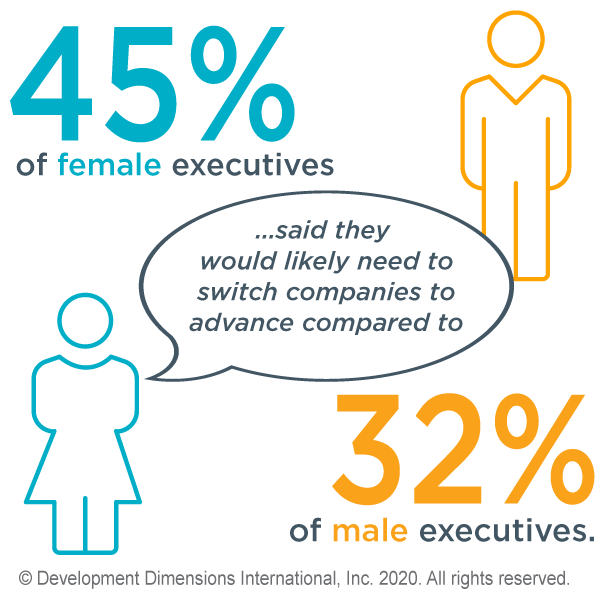
1. Build Empathy
What we hear: When it comes to empathy, leaders only don't "go it."
What to do: Inclusion must start with empathy. Why? Leaders need to exist able to put themselves in the shoes of everyone on their team to truly connect with them.
Unfortunately, empathy is rarely a part of how a company operates. More often, visitor policies and procedures go far nearly impossible for leaders to demonstrate empathy.
To foster empathy in the workplace, leaders demand to model it. Simply for some leaders, it'south a challenge to connect with the feelings of exclusion, particularly if they've never experienced information technology themselves. That's why it's and then critical that leaders go the ability to experience exclusion and connect to it emotionally.
At that place are a number of ways to attain that, such equally reading books or having discussions. One of the about effective means we've found has been through virtual reality, which lets leaders experience exclusion for themselves.
Our advice: Don't save empathy for a crunch. Start building empathy and connexion at present so that leaders have a stronger connection before a crisis begins.
2. Communicate Inclusively
What we hear: Leaders avoid tough conversations.
What to do: Daily communication is at the core of creating an inclusive environment. Conversations with others can make or pause inclusion. Subtle words and unintended moments of exclusion past a leader or squad fellow member tin can make people experience unwelcome, not valued, and disengaged.
Inclusion must live in the micro-moments of a leader's interactions. Ultimately, leaders should exist aware of the words they utilise and when they use them.
Everyone has personal and practical needs and is seeking for them to be met in daily interactions. In every chat, leaders should:
- Maintain or raise self-esteem so people feel valued and respected.
- Listen and reply with empathy so people feel listened to and understood.
- Ask for help and encourage involvement so people feel involved.
- Share thoughts, feelings, and rationale to build trust.
- Provide back up without removing responsibleness.
Our advice: The leader'southward role in how to create an inclusive environment starts with modeling effective communication skills and advocating for inclusive behaviors. The issue is people will have a sense of belonging and will be valued for their unique perspectives, contributions, and experiences.
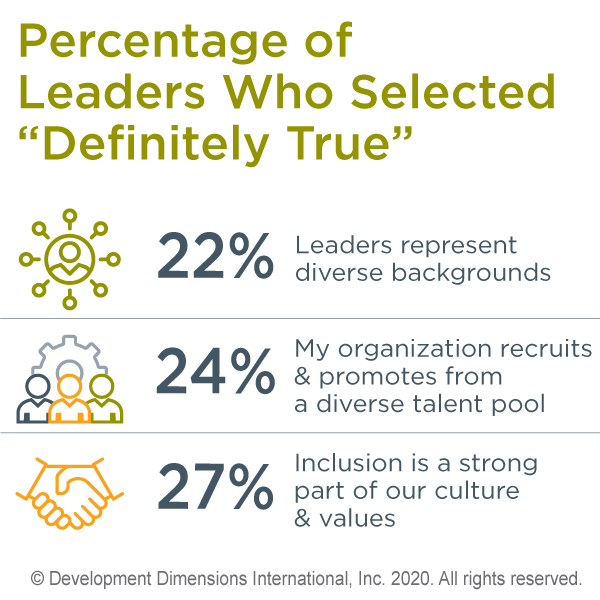
3. Run Inclusive Meetings
What we hear: The same people tend to boss meetings, while others are excluded, dismissed, or even talked over.
What to practise: Inclusion is making sure the right people are involved—for ideation and decision making. We worked with Dr. Steven Rogelberg, a renowned expert on meetings and the science behind them, to reverberate on intentional coming together blueprint. Enquiry shows meetings without a clear purpose disproportionally bear on those who are underrepresented at work.
Starting your meetings by defining objectives and benefits can mitigate interruptions. With techniques like partner discussions and leveraging the chat function and polling software, people who are more than introverted and reserved will suddenly have a voice. To ensure virtual meeting attendees are included and engaged, leaders tin can share materials beforehand to describe people in to create infinite for equal airtime in discussions.
Our advice: Creating a set of basis rules provides equal participation opportunities. Unspoken rules now go overtly addressed in the process. Developing these practices for leading effective meetings creates psychological rubber and a identify where people can be their whole, authentic selves.
4. Consul for Opportunity
What we hear: Leaders tend to give the important projects to the same ready of superstars over and over over again.
What to do: Leaders must be more thoughtful about who receives opportunities. This starts with thinking about the capabilities, development needs, motivators, and availability for all team members.
Prior to delegating tasks or assignments, leaders should answer the following questions to guarantee thoughtful decisions are made:
- Where am I making assumptions?
- Where am I unsure of what someone can practise or wants to do?
Our advice: When it comes to delegation, leaders often remember it'due south all or zip. And because they're decorated, they opt for the path of to the lowest degree resistance. But leaders can start to call up differently. They can delegate idea generation, tasks, and authority separately. Past considering how to allocate the different parts of the project, leaders are forced to assign projects thoughtfully, rather than based on habit or favoritism.
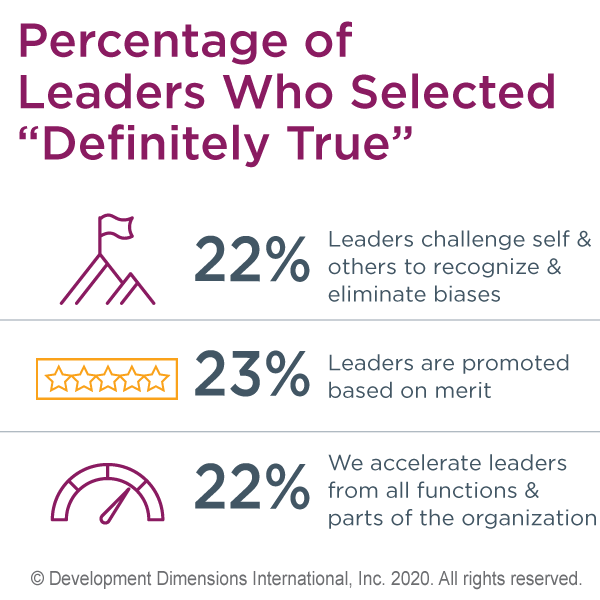
5. Give Honest Feedback
What nosotros hear: Our managers are uncomfortable giving feedback for improvement, specially to people who are unlike from them.
What to practice: In general, a lot of people avoid giving feedback for improvement because they are uncomfortable with conflict. And the problem often gets worse the more different people are because the leader may struggle to predict how the person is going to react. As a result, they simply avoid giving feedback, which cheats their team fellow member out of the feedback they need to abound.
On the flip side, some leaders may be too comfortable giving feedback for improvement. In particular, they may struggle to empathize someone's different point of view, and find themselves reacting negatively, without seeing the person's merits.
Ultimately, leaders demand to adjust their feedback way depending on the singled-out needs of the person. For example, minorities and women frequently study they have less clarity about what is required for success and promotion decisions aren't always clear.
Feedback should be clear, specific, and timely. Leaders tin use the STAR method for positive and developmental feedback. The STAR method focuses on the beliefs instead of the person. This arroyo ensures those who are already in an underrepresented group don't experience targeted in addition to feeling like they're not a office of the "in" grouping.
Our advice: Feedback that comes from only i source can be biased. Obtaining from multiple sources (client, colleagues, direct reports) and requesting both positive feedback and feedback for improvement can reduce the likelihood of bias.
Ultimately, it'southward the leader'south job to build a culture of ongoing feedback. This is the most effective way to reduce bias. The more diverse grouping of feedback providers, the better the picture of someone's true performance.
6. Coach for Growth
What we hear: Leaders tend to experience well-nigh comfortable coaching people similar themselves.
What to practise: Leaders gravitate towards coaching people like themselves. By avoiding coaching people who are different from them—whether because of gender, groundwork, age, or some other factor—leaders limit others' chances for advancement.
Accurate listening is a disquisitional trait of an effective charabanc. Proficient leaders listen for content, intent, and emotions. When done well, the leader knows when and where to show empathy. It's also imperative for the double-decker to share their own perspective.
Our advice: Leaders who share stories about themselves can make a powerful connectedness with their employees. This demonstrates to everyone else that it'southward safe to do the same. It also builds trust, opens the discussion, and enriches understanding of differences.

7. Resolve Conflict Fairly
What we hear: Managers try to avert conflict and ofttimes resolve it by trying to maintain the condition quo.
What to practise: Conflict is natural and necessary for better decision making. Afterward all, everyone has different experiences, points of view, preconceptions, styles, abilities, and motivations. What'south important is that leaders make sure that multiple viewpoints are heard and evaluated.
To do this, it'due south important for leaders to define and explore both types of variety (identity and cerebral) with their teams. This can establish a stiff foundation of understanding and valuing differences within the team and with others in the company.
Our advice:Nurturing these differences helps people feel appreciate and engaged. Information technology tin can also aid build their delivery to contributing to the team and the company. And with a team who understands multifariousness and has an inclusive mind-set, it volition be less likely that differences escalate into conflicts.
How to Create an Inclusive Environment: Create Dandy Leaders
The virtually critical part of how to create an inclusive environment is practicing it intentionally every unmarried twenty-four hours. These micro-moments add up to create a civilisation of fairness, inclusion, and simply great leadership.
At the same fourth dimension, we need to recognize that we are in this for the long booty. And some days, we will make mistakes.
That'due south why I recommend ane more essential leadership behavior: the ability to give yourself grace. When y'all allow yourself room to fail, powerful learning is often the result. Give yourself and your team the space for things to go incorrect. Transform mistakes into moments of empowerment.
For more on how to create an inclusive environs, including data and all-time practices, download our diverseness and inclusion infographic . To learn more about our solutions, download an overview .
Meagan Aaron is a managing consultant for DDI'southward The states Operations where she started 24 years agone as an intern. When she's not leading account teams or coaching executives, Meagan can be constitute designing flower creations for weddings or the dwelling. Living in Memphis has provided her a community to apply her gifts and talents by coaching women business owners and upskilling leaders at nonprofits like the Memphis Metro YMCA.
How to Create an Inclusive Surroundings: 7 Skills Every Leader Needs
Download Now
Source: https://www.ddiworld.com/blog/how-to-create-an-inclusive-environment
0 Response to "How to Create a Good Reading Environment"
Postar um comentário